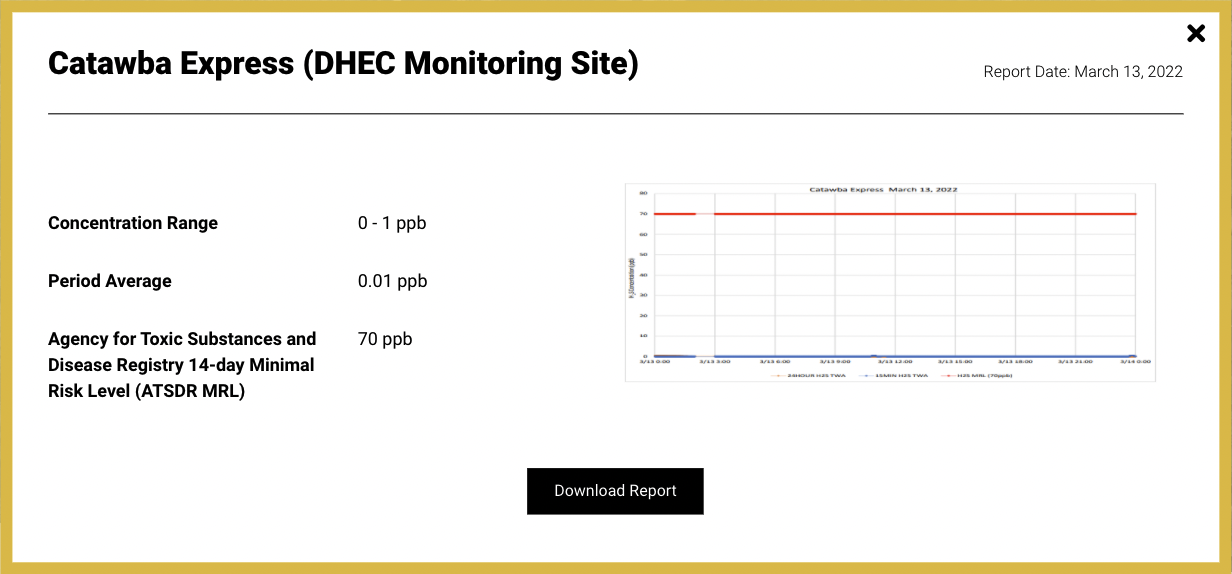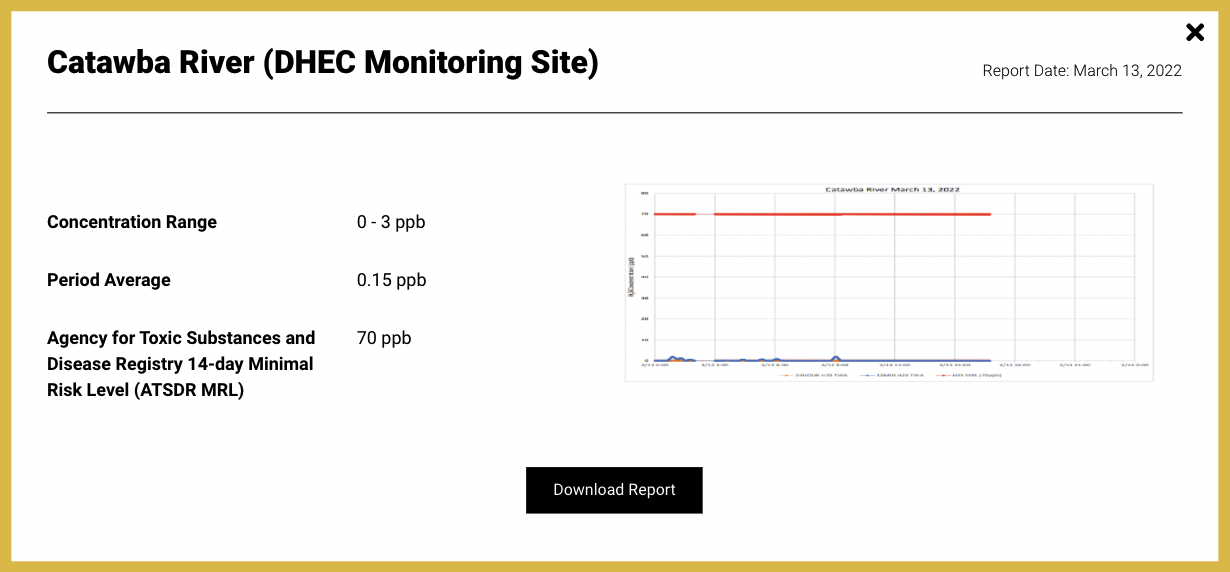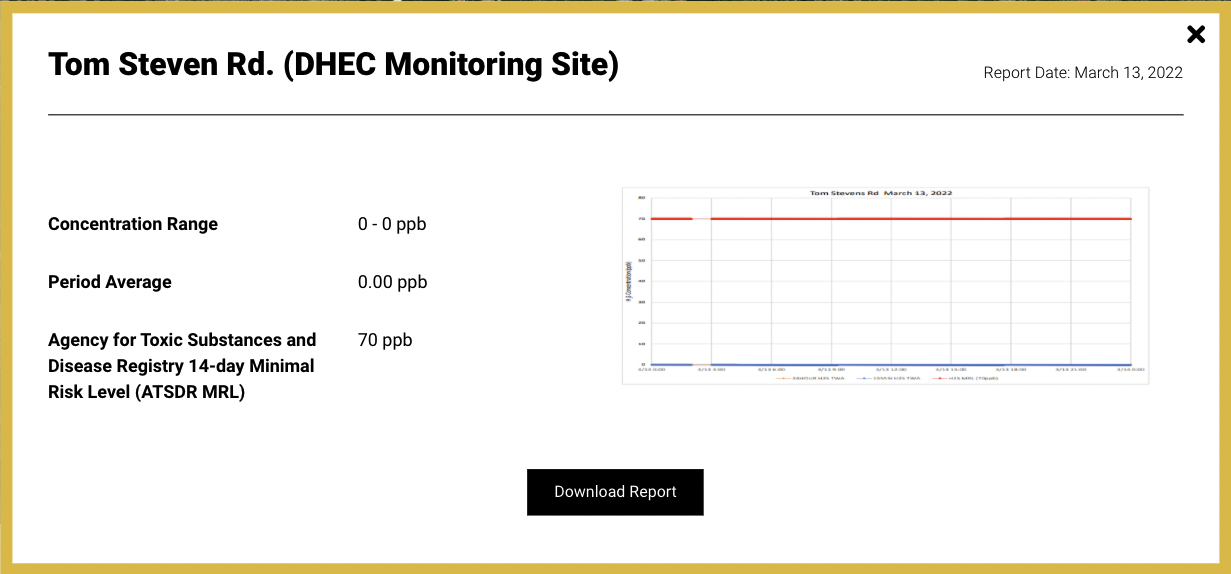Updated March 18, 2022
Our critics have said a lot about odors at New-Indy. Sadly, much of that is simply wrong.
As to the hydrogen sulfide that has been attributed to the New-Indy Catawba facility, the truth is that New-Indy has undertaken a long list of improvements since early last year and they are working. Those improvements include the removal of waste material from the Aeration Stabilization Basin (ASB) and Equalization Stabilization Basin, the activation of all 52 aerators in the ASB, the re-instatement of the steam stripper, the installation of a cover and carbon filter on the Post Aeration Basin, the implementation of state-of-the art water health measurements instruments, and many other enhancements. With these changes and additions to the facility, the levels of hydrogen sulfide measured by our many monitors at the mill and in the community have been zero or negligible for months – nowhere near the level federal regulators say is dangerous or unhealthy.
There are currently 11 total hydrogen sulfide monitors operating at the New-Indy fence line and in the local community. Eight are managed by New-Indy Catawba and three by the South Carolina Department of Health & Environmental Control (S.C. DHEC). Daily reports from all 11 stations are posted in the infographic map above.
New-Indy Catawba Monitors: Mill Station 1, Mill Station 2, Mill Station 3, Catawba Headstart, Liberty Hill, Millstone Creek, Riverchase Estates, Tree Tops
S.C. DHEC Monitors: Catawba Express, Catawba River, Tom Steven Rd.
Daily reports for the three fence-line monitors show the most recent day for which the monitor detected a 7-day average hydrogen sulfide concentration in excess of the 70 parts per billion (ppb) guideline set by the Agency for Toxic Substances and Disease Registry (ATSDR). That guideline is based on published research and practical information and is used by the U.S. Environmental Protection Agency (EPA) and the state of South Carolina for the regulation of outdoor air. It was intentionally published by the ATSDR as a health-based guideline to protect not only the general population, but also sensitive members of the community, including asthmatics, the elderly and children.
- Mill Monitoring Station ATSDR Exceedances (7-Day Average at 70 ppb)
- Mill Station 1: September 8, 2021
- Mill Station 2: No exceedances since monitoring began on May 26, 2021
- Mill Station 3: No exceedances since monitoring began on May 26, 2021
Additionally, there have been no exceedances of the 30-minute 600 ppb average guideline established by the ATSDR at any of the fence-line monitors since September 2, 2021, and two of the monitors have not had any exceedances since monitoring began on May 26, 2021. That guideline is also a conservative parameter for sensitive members of the population.
- Mill Monitoring Station ATSDR Exceedances (30-Min. Average at 600 ppb)
- Mill Station 1: September 2, 2021
- Mill Station 2: No exceedances since monitoring began on May 26, 2021
- Mill Station 3: No exceedances since monitoring began on May 26, 2021
In addition to three New-Indy Catawba fence-line hydrogen monitors, there are also five monitors in the community – three north of the mill and two south of the mill. Those monitors have shown the following for hydrogen sulfide:
- Community Monitoring Station ATSDR Exceedances (7-Day Avg. at 70 ppb & 30-Min Avg. at 600 ppb)
- Catawba HS: No exceedances since monitoring began on May 13, 2021
- Liberty Hill: No exceedances since monitoring began on May 13, 2021
- Millstone: No exceedances since monitoring began on May 13, 2021
- Riverchase: No exceedances since monitoring began on May 13, 2021
- Tree Tops: No exceedances since monitoring began on May 13, 2021
Examples of the daily monitoring reports by S.C. DHEC posted to this site



As with all paper manufacturing facilities throughout the country, people may occasionally detect an odor, but odor alone does not indicate a health issue associated with New-Indy Catawba. The previously mentioned hydrogen sulfide levels below ATSDR-specified limits clearly indicate little, if any, risk of an adverse health impact, even for the most susceptible segments of the population.
New-Indy has fully cooperated with the EPA and the South Carolina Department of Health Environmental Control (S.C. DHEC). We have done more than the agencies required. And New-Indy plans to do even more in the coming months.
New-Indy has a Community Service Line (803-670-2001) and uses this website’s Contact Us section to field odor observations. We investigate each one and use the process to further improve our operations. If you want to keep up with the latest improvements, we suggest that you read this website and follow our Twitter account (@NewIndyCatawba).
And if you want to be part of the dialogue, please contact us for more information about joining our Community Engagement Group (CEG).
The CEG, which is comprised of community members who volunteer their time to provide feedback to New-Indy, began meeting in June 2021 and has grown a lot since. Members are active and engaged. While dissenting opinions are expressed by members of the CEG at these meetings, the discussion is always constructive and productive. The feedback we have received is invaluable and we appreciate the insight from individuals impacted by our operations. At the monthly meetings, we share our plans and answer questions. Some of our most effective initiatives have emerged from the exchange.
We respect the community in which we live and work. We want to engage with you. We welcome tough questions. Thank you for keeping an open mind.

Recent Comments